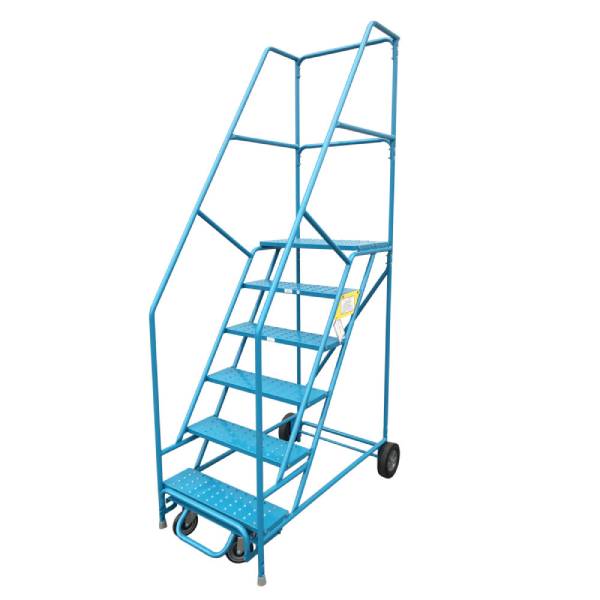Important Safety Considerations for Rolling Ladders

While working at heights is necessary for many applications, it can be extremely hazardous if the proper precautions are not taken. Even if you are using the correct equipment for working at heights, it is important for every employee to be aware of the potential risks and hazards. As a leading provider of rolling ladders for warehouses and industrial facilities, the team at Unitran Manufacturers knows how important safety is when working at heights in any setting. That is why we have compiled a list of important safety considerations for rolling ladders to help workers and supervisors maintain a high level of safety while on the job.
Which warehouse ladder is right for you?
5 Crucial Safety Considerations When Using Rolling Ladders
Rolling ladders can be an extremely useful tool for any stockroom or warehouse. Despite the utility they offer, they can also be potentially hazardous if certain precautions are not taken. To ensure optimal safety when using a rolling ladder, keep the following considerations in mind:
1. Always Perform an Inspection Before Use
Operators should always check rolling ladders for defects and damage before using them. While most rolling ladders are designed to last a long time and resist wear, accidental damage can occur during use and render a ladder unsafe to use. By performing an inspection, these signs of damage can be spotted before they lead to injury.
2. Do not Move the Ladder When Someone is on it
While this should go without saying, rolling ladders should never be transported with someone on the steps or top platform. If a worker attempts to transport another employee in this manner, the ladder can easily tip over and lead to severe injuries for both parties.
3. Do Not Reach Over the Edge of the Rolling Ladder
Rolling ladders often have a wide base to minimize the risk of tipping over when the brake/wheel locks are engaged. While this base can keep rolling ladders stable in most situations, workers should never reach too far over the edge of the ladder or distribute their weight against the edge as this could potentially cause the unit to tip over.
4. Always Use the Brake/Wheel Locks
Most rolling ladders feature a brake system or wheel locks that automatically engage when a worker steps onto the unit. These systems work to prevent movement and optimize stability when the unit is in use, making them crucial for safe operation. Before an operator climbs up the steps of a rolling ladder, they should confirm that the brake/locks are engaged. If these systems do not engage as they should, they must be repaired before the ladder can be used.
5. Do Not Operate Rolling Ladders on Soft or Uneven Surfaces
Rolling ladders are designed to operate only on even and solid surfaces such as concrete. They should never be used on gravel, dirt, or other uneven surfaces as this will drastically increase the risk of tipping or damage to the unit.
To learn more about our warehouse ladders or to inquire about our other equipment, get in touch with the team at Unitran Manufacturers. We can be reached through our online contact form and will be happy to answer any questions you may have regarding our products or the details of your operation.

